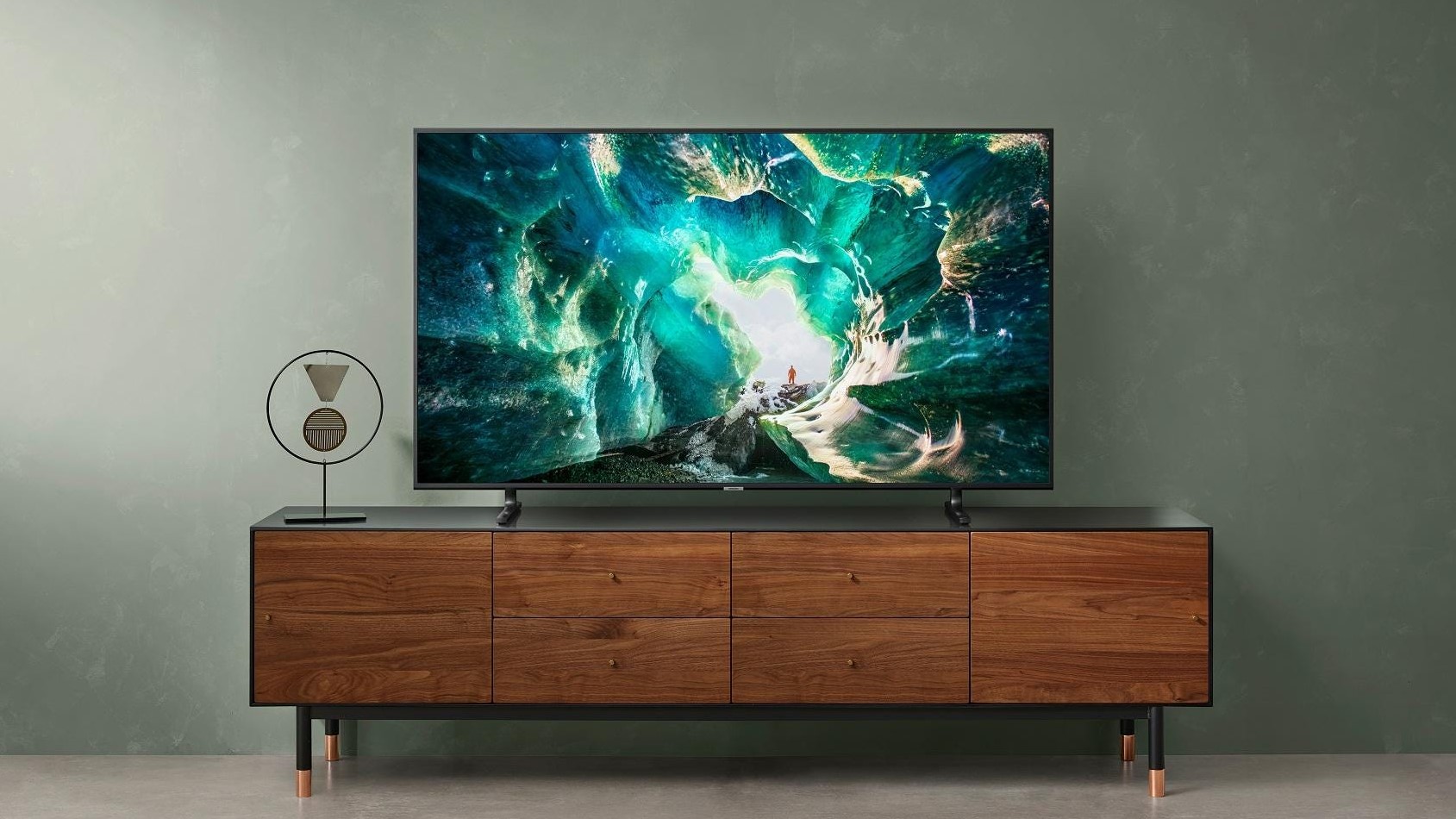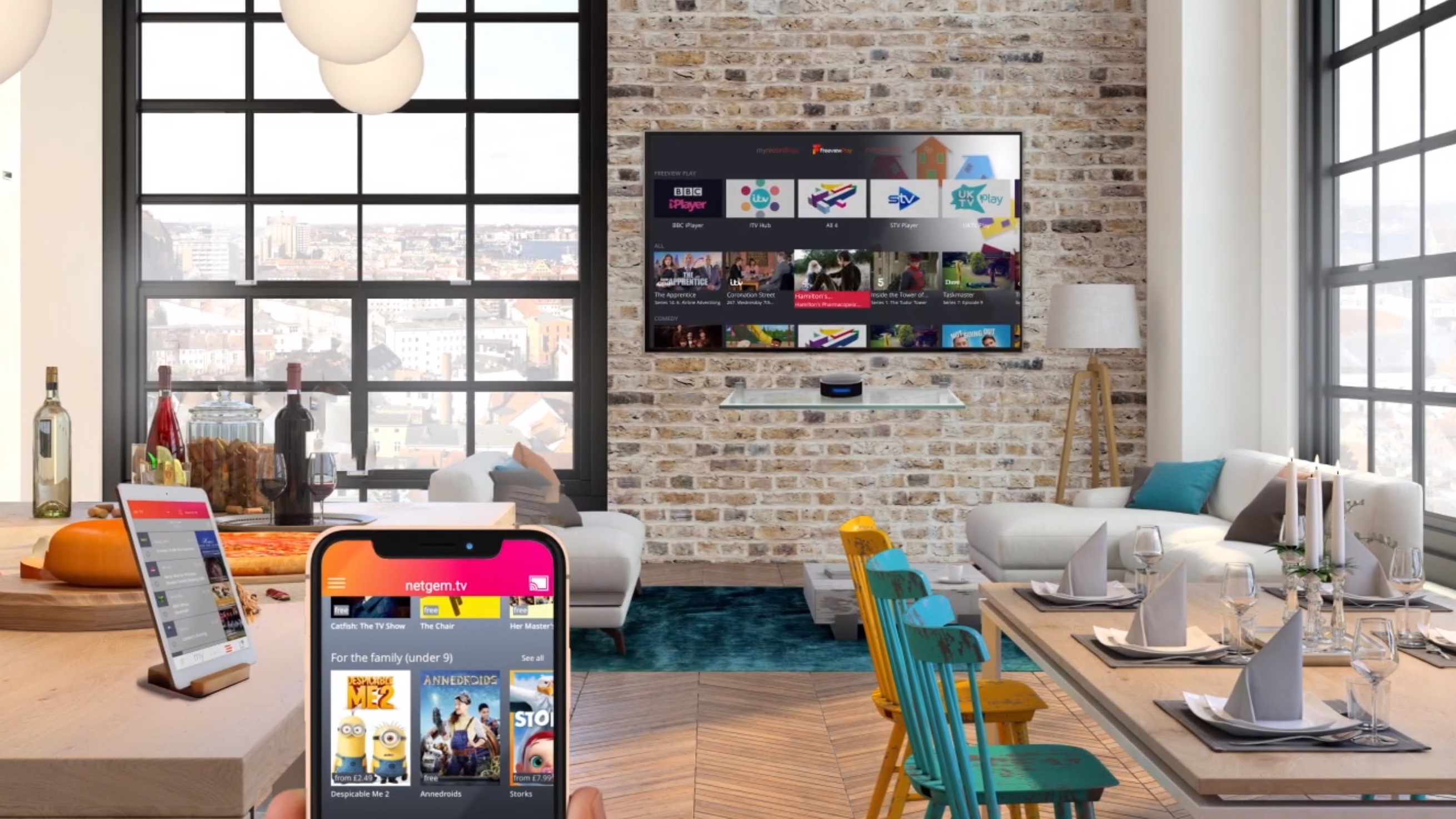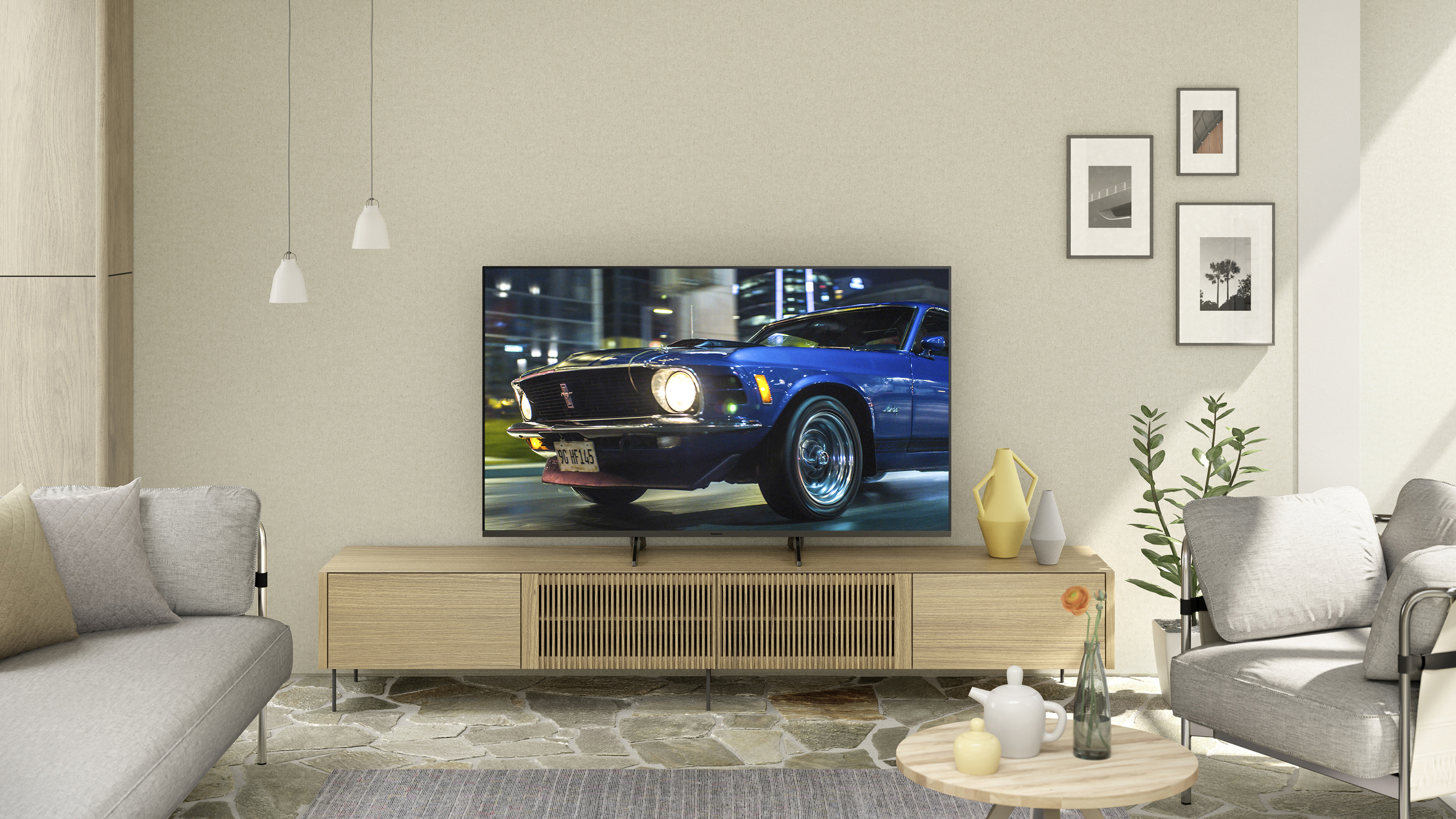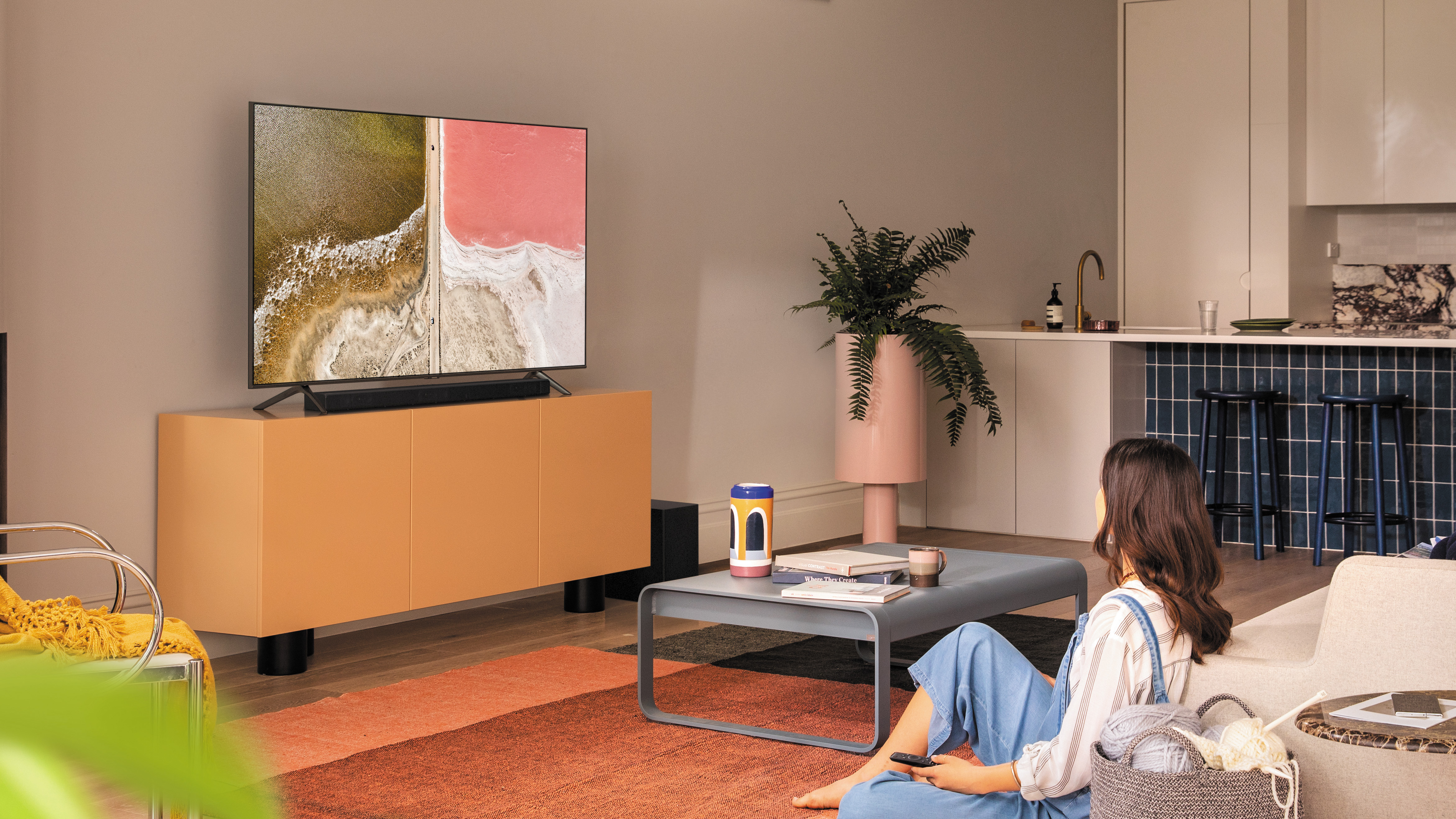What size TV do I need? How to choose the perfectly sized TV
Let's consider all things great and small

What size TV should you buy? It’s easy to be lured into buying a new TV with talk of 4K (or 8K) resolution, high-end smart TV features, or fancy speaker arrays. However, if you haven’t got the right TV size for you, you can end up with an over-sized display that you keep walking into, or a way-too-small screen that you have to squint to see from across your living room.
Getting the right TV size for you will depend on your individual needs, as well as the needs of your home, the size of the room you plan to put it in, the number of people that will be watching it at any one time and, of course, how big your budget is.
You might know vaguely that you want a humble-sized small TV or something super-sized, but there are plenty of different TV sizes to consider at a variety of prices in the middle. But even then there’s a lot to think about. If a mid-sized TV is what you're after, do you want the flagship 55-inch size, or is a 49-inch the largest you can fit on your counter? Are you desperate for one of the best 65-inch 4K TVs, but scared it might dominate the space?
- Best TV brands 2021: the TV makers to consider for your next big buy
The average television is getting bigger and bigger every year, and our expectations of size, suitability, features and TV tech are constantly changing too.
That’s why it’s not always clear which TV size you should buy, which is why we've put together this guide to the main categories of TV sizes and the strengths and weaknesses of each one. For our full rundown of the different TV sizes you could want – and the best TVs in each category – read our guide below.
If you'd rather search for a new TV by price band instead of size, you might want to check out our smart TV prices guide instead.

The small-size TVs (24-32 inch)
For those balking at the idea of picking a random size, have no fear. Television manufacturers tend to make their sets within quite rigid dimensions, meaning there are really only a handful of sizes you have to choose from.
Get daily insight, inspiration and deals in your inbox
Sign up for breaking news, reviews, opinion, top tech deals, and more.
At the smaller end of the scale, you can get 20, 24, or 28-inch sets, some of which are best placed on a desk or counter as a step up from your computer monitor. After that you have the 32 or 36-inch TV, which is compact enough to fit in tighter spaces than its larger counterparts without downsizing too much.
These are good bets for single-person TVs or occasional-use sets in smaller residential spaces – or just for anyone on a budget, as a 32-inch TV can cost as little as £200 / $200 / AU$350. (Or as much as $599 / £549 for Samsung's The Frame designer TV.)
What you gain in convenience, however, you may miss out in additional ports and the overall picture quality. Even 32 inches is too small for a 4K UHD display, meaning you're stuck watching standard HD/SDR quality content at either 720p (1,366 x 768 pixels) or 1080p (1,920 x 1,080 pixels). Most content is in HD/SDR, anyway, so it may not be much of a loss for you – but if you want more from your picture, you may want to jump a few sizes and pixel counts up.
- Best small TVs: tiny sets to squeeze into your home

The mid-size TVs (40-43 inch)
Remember when 40 inches was a whopping size for a television? Nowadays the 40/42/43 inch range of TVs is seen as the starting point for a 4K display, so usually offers a handy compromise between picture quality and price.
A native 4K television will enable you to watch Ultra HD (3,840 x 2,160 pixels) content, display 4K gaming from a PS4 Pro or Xbox One S/X, and input 4K UHD Blu-Ray DVDs – and will be the difference between a standard capability set and one primed for the higher end of TV resolutions.
These days, the likes of Netflix, Amazon Prime Video and Disney Plus all offer some amount of 4K content, as TV showrunners and filmmakers increasingly look to the 4K standard to make their creations look as good as possible, so 4K isn't the luxury upgrade it seemed a few years ago.
The prices of these sets are usually between £400 / $500 / AU$700 and £800 / $1,000 / AU$1,400 for a 40-or-so inch LCD display. You're not getting the proprietary panel technologies seen at larger sizes, but this size is probably where you get most bang for your buck.
- Best 40-inch TVs to buy today

The big-screen TVs (55, 65, 75 inch)
For those after a truly home cinema experience, you'll be looking at a 55, 65, or 75-inch television. These sets are the best for entertaining large groups or families, watching football and sports matches on the big screen, and getting the full impact of 4K Ultra HD Blu-rays and movies.
We're lumping in the larger sizes here, as the benefits – and trade-offs – are pretty similar when you get to this scale.
The sets are more expensive, take up more space and have to work harder to display standard HD/SDR content on their massive displays. If you have room for them, however, they can be absolutely magical to have in the comfort of your own home.
Fifty-five inches is also the minimum for an OLED: the high-end panel technology you'll find in only the most premium flagship models from Sony, Philips, or LG. If you want the very best picture quality at all costs – and there will be costs – this is likely what you're angling for.
In the end, whether you opt for a 55-inch or 75-inch may come down to what you can fit into your living room, and what your actual budget is. A 55-inch TV can set you back as little as £400 / $400 / AU$600 for a budget model, and as much as £2,500 / $2,500 / AU$3,500 for a higher-quality make. A 75-inch set is going to run you into several thousands of pounds or dollars.
There's also a number of 82 or 85-inch televisions for those truly ready to fork out for a super-sized screen. Those sizes are usually going to come with OLED or Samsung's competing QLED panel technology, if not a whopping 8K pixel display to boot.
- Check out the best 55-inch 4K TVs, 65-inch 4K TVs, and 75-inch 4K TVs
...but size isn't everything
As much as we might be impressed by the ever larger screen sizes out there, it's important to remember that bigger isn't always better.
A larger screen can obviously display a larger image, but if it can't handle higher resolutions – or the upscaling techniques needed to enlarge low resolution content – you're just paying for a big, blurry image. You need more pixels for a bigger screen, after all, and those extra pixels need to be up to the heavy-duty picture processing to make either HD or UHD content look good on a big screen.
A larger screen is also harder to fit into cramped spaces, and can dominate the room it's in. That's fine if you want to give your TV pride of place, but worth considering before you jump for the biggest screen you can find.
- After a sizeable QLED? Check out our pick of the best Samsung TVs for 2021
Henry is a freelance technology journalist, and former News & Features Editor for TechRadar, where he specialized in home entertainment gadgets such as TVs, projectors, soundbars, and smart speakers. Other bylines include Edge, T3, iMore, GamesRadar, NBC News, Healthline, and The Times.
